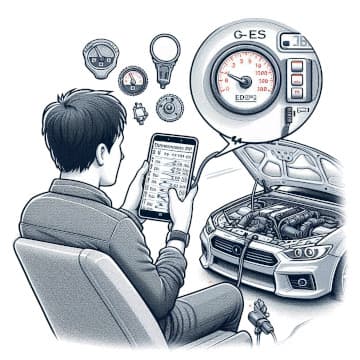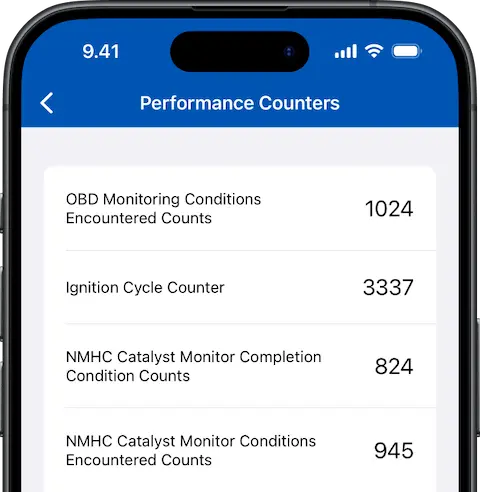One key aspect of keeping your vehicle in top shape is using onboard diagnostics (OBD) In-use Performance Tracking counters, referred to as performance counters in OBD Auto Doctor.
Whether you’re a car enthusiast or simply looking to maintain your vehicle’s health, understanding these counters can help you maintain performance and ensure your vehicle complies with emissions regulations.

What Are Performance Counters?
Performance counters are metrics used to monitor the effectiveness of various emissions-related systems in your vehicle over time. These counters track how often certain systems, such as the catalytic converter, oxygen sensors, and exhaust gas recirculation (EGR) system, are evaluated by the OBD2 system. Essentially, they ensure that your vehicle’s emissions control systems are functioning properly and are regularly tested.
Why Are Performance Counters Important?
Performance counters serve several essential purposes:
- Regulatory Compliance: Vehicles are required to meet emissions standards, and the counters help manufacturers and regulators ensure that the emissions control systems are being tested under real-world driving conditions.
- Vehicle Diagnostics: For owners and technicians, the counters offer valuable insight into how often a vehicle monitors the systems, allowing for better diagnostics when issues arise.
- Preventative Maintenance: Understanding how often your vehicle tests the emissions systems can help you catch potential problems early and keep your car running smoothly.
How Do Performance Counters Work?
The OBD2 system continuously monitors key components of the emissions control system. As you drive, performance counters increment each time a specific system completes a test under appropriate conditions. These tests occur only during certain driving scenarios, meaning that driving habits, environment, and conditions can all affect how often these tests are performed.
Each emissions control system has two main counters:
- Numerator: Counts how many times the system has been tested.
- Denominator: Tracks the number of opportunities for testing that occurred.
For example, suppose you’ve been driving your vehicle mostly on highways (steady speeds) without much stop-and-go traffic. In that case, some systems might get tested less frequently because they require different driving conditions.

Performance Counters on iPhone
What Should You Do With This Information?
As a vehicle owner, you don’t need to manage performance counters actively, but understanding how they work can be helpful. If you’re facing diagnostic issues or trying to understand emissions performance, you can use these counters to get insights into how well the vehicle’s systems have been monitored and identify potential problems.
It’s important to note that the car’s ECU (Electronic Control Unit) dictates which counters are available for tracking. OBD Auto Doctor will only display the counters that the connected vehicle supports. Even the free version lists the available items, though the actual values may be hidden or masked. Not supported by the ECU means that the selected Electronic Control Unit does not provide data on in-use performance tracking counters.
Take Control of Your Vehicle’s Health
Want to dive deeper into your vehicle’s performance data? Download OBD Auto Doctor software to see how your emissions systems are performing and catch potential issues before they become costly repairs.
Get started
Get started with OBD Auto Doctor for free. Download the software and start diagnosing your car!